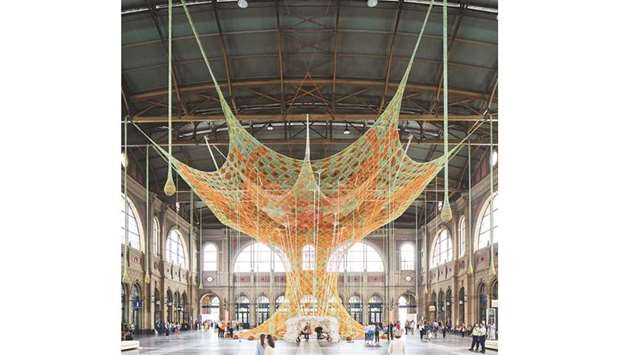Qatar Museums (QM) hosted its 4th Public Art Talks session at the Fire Station with renowned artist Jitish Kallat.
The session was moderated by Tom Eccles, special adviser of Public Art at QM, and discussed Kallat’s inspirations and practice at his work, which reveals a continued engagement with the ideas of time, sustenance, recursion and historical recall.
He has exhibited his work widely across the world in contexts such as galleries, museums and biennials.
In 2017, the National Gallery of Modern Art (New Delhi) presented a mid-career retrospective of his work titled Here After Here 1992-2017, curated by Catherine David.
In 2014 he served as the curator and artistic director of the second edition of Kochi-Muziris Biennale, India.
Kallat was born in Mumbai in 1974, the city where he continues to live and work.
The final session of the series, on December 9 at the Fire Station at 7pm, which will also be moderated by Eccles, will bring together Nazgol Ansarinia, Rashid Johnson, Ernesto Neto, and Suki Seokyeong Kang.
Ansarinia has a practice that poetically investigates everyday life.
Her work seeks out the most mundane aspects of life in her home city of Tehran, isolating and reassembling found objects to highlight their evocative dimensions.
The artist’s background in design informs her practice, which employs a variety of media such as video, sculpture and drawing.
Johnson has a multidisciplinary practice that incorporates diverse materials rich with symbolism and personal history.
He embeds a range of everyday materials and objects in his work that are often associated with his childhood and collective aspects of African American intellectual history and cultural identity.
Neto explores constructions of social space and the natural world by inviting physical interaction and sensory experience.
He incorporates organic shapes and materials such as spices, sand and shells in his work to renegotiate boundaries between the organic and manmade, the natural, spiritual and social worlds.
Kang works in sculpture, video and performance installations.
Her sculptural objects in powder coated steel and wood are softened by fluid textiles and fabrics that are draped or tied on the static structures.
Kang’s work explores systems of movement and rhythmic practices, often looking to personal stories and South Korean histories of dance or music.
“We have had a thought-provoking season of public art talks by some of the most important artists of our time,” said Abdulrahman al-Ishaq, head of Public Art at QM. “We hope that audiences in Qatar have enjoyed these sessions and we look forward to hosting more in the future.”

Neto’s Gaia Mother Tree (2017-2018) installation at Zurich Main Station, Switzerland.


